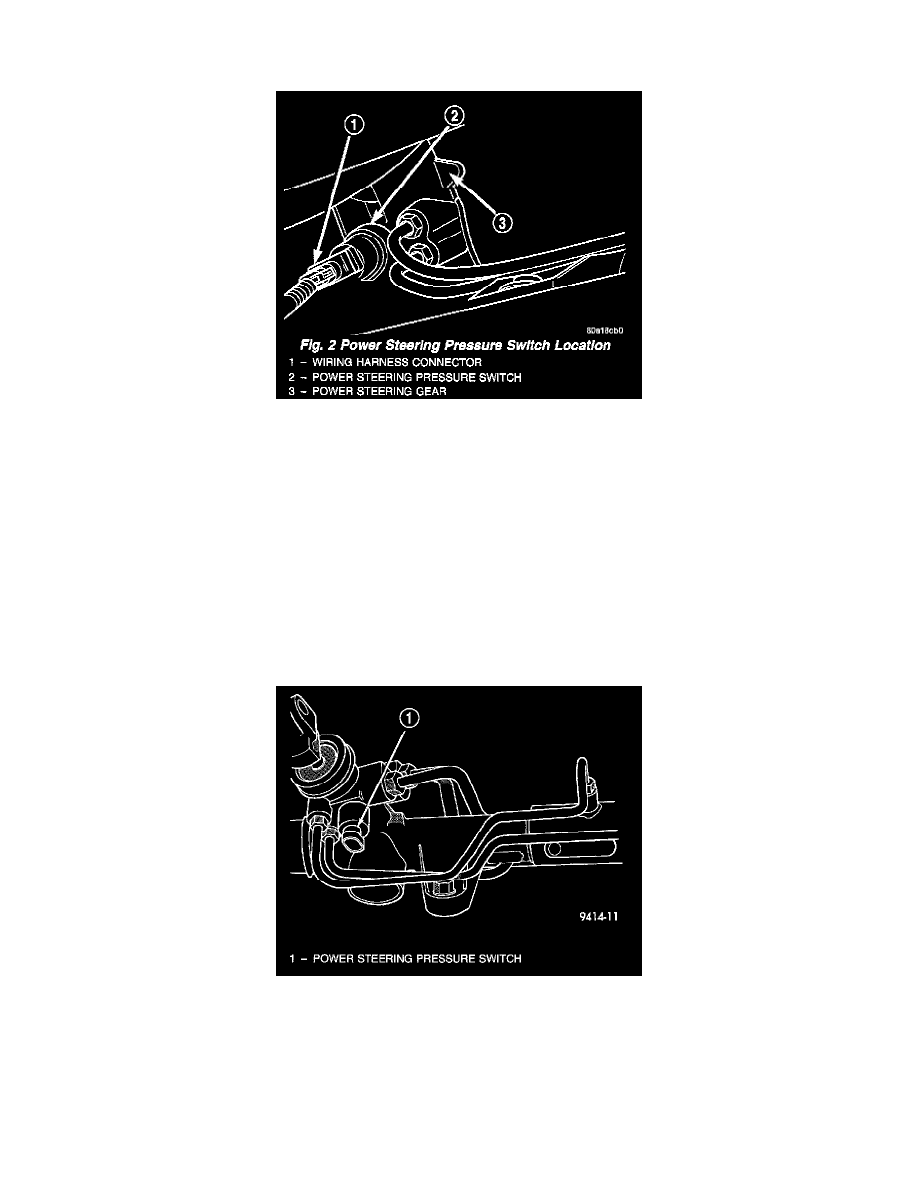Breeze L4-2.4L VIN X (2000)

Power Steering Pressure Switch: Description and Operation
POWER STEERING PRESSURE SWITCH
Fig. 2
On vehicles equipped with power steering, a power steering pressure switch is used to improve the vehicle's idle quality when required. When a
demand for power assist is put on the power steering system at idle, pump pressure puts additional load on the engine, thus decreasing engine idle
speed. The pressure switch improves vehicle idle quality by maintaining the required engine idle speed when the pressure rises in the power
steering system.
The power steering pressure switch is mounted directly to the power steering gear.
The pressure switch functions by signaling the powertrain control module that the power steering system is putting additional load on the engine.
This type of condition exists when turning the front tires of the vehicle when the vehicle is stationary and the engine is at idle speed. When this
condition is sensed by the power train control module, through a signal from the power steering pressure switch, engine idle speed will be
maintained. The maintained engine idle speed compensates for the additional load, thus maintaining the require engine idle speed and idle quality.
POWER STEERING PRESSURE SWITCH - PCM INPUT
Power Steering Pressure Switch
A pressure sensing switch is located on the power steering gear.
The switch provides an input to the PCM during periods of high pump load and low engine rpm; such as during parking maneuvers.
When power steering pump pressure exceeds 4137 kPa (600 psi), the switch is open. The PCM increases idle air flow through the IAC motor to
prevent engine installing. When pump pressure is low, the switch is closed.
